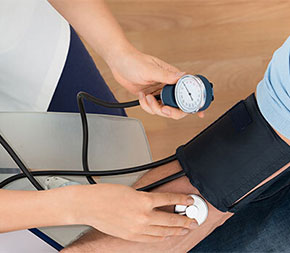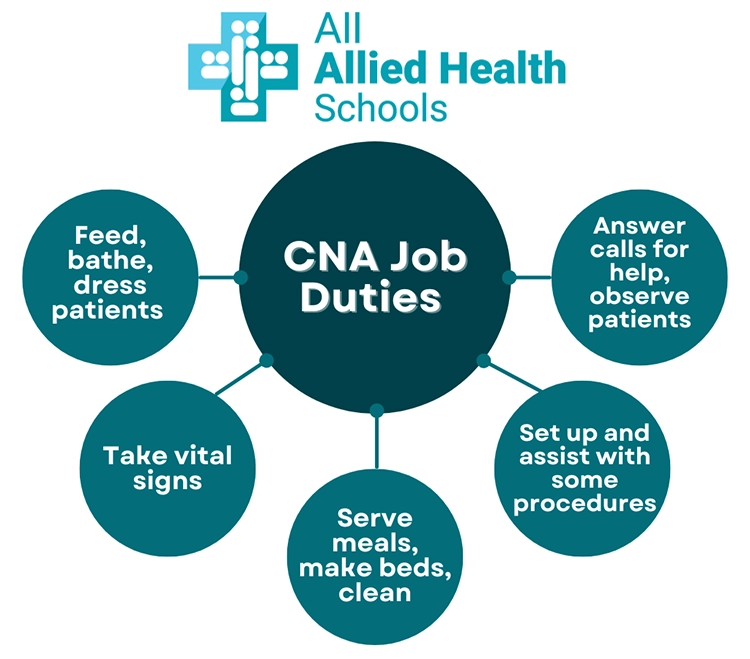
The Certified Nursing Assistant’s Role
A certified nursing assistant, or CNA, works under the supervision of nurses to deliver high quality care to patients. The job requires long hours and many responsibilities, but caring for patients on a daily basis provides some of the greatest rewards any profession could offer. Not to mention, the skills you learn as a certified nursing assistant can prepare you for a long-term career in the nursing field.
Take a closer look at the daily duties of a certified nursing assistant (one who has completed CNA certification). Here are five important job objectives you can expect to perform as a CNA.

1. Feed, bathe, and dress patients
Certified nursing assistants help patients with their basic needs. Generally, this means helping them bathe, dress and feed themselves. These patients might include stroke victims, the elderly residents of nursing homes, or individuals recovering from an accident, injuries or surgeries in a hospital.
2. Take patient vital signs
From temperature to blood pressure, some CNAs are responsible for taking and recording patient vital signs. Routine tasks such as these are typically the initial steps of a patient’s visit to a physician’s office or hospital, which means the CNA has the responsibility of making a positive first impression for the medical team.
3. Serve meals, make beds, and keep rooms clean
In line with meeting patients’ basic needs, duties of a certified nursing assistant often include serving meals to patients, making beds and helping clean rooms. This can mean cleaning out bedpans and changing soiled sheets. It also means getting the chance to have regular, one-on-one contact with patients—the compassionate relationships that can help people make it through times of illness with dignity.
4. Set up medical equipment and assist with some medical procedures
Storing and setting up medical equipment might involve laying out tools for the next patient exam or perhaps moving heavy medical equipment from one room to another. Some states allow CNA’s who have had the appropriate training to assist with or perform some medical procedures, such as drawing blood.
5. Answer calls for help and observe changes in a patient’s condition or behavior
Working so closely with patients on a daily basis, CNAs observe not only the obvious changes in a patient’s physical condition but the subtleties of their emotional state. That intuition can have immeasurable impact on helping patients make it through a trying recovery or come to terms with a long-term condition.
Whether they take a patient’s blood pressure before the doctor comes in, bring them breakfast in the morning or simply listen, CNAs make a significant difference to the quality of care patients receive.
Getting certified as a nursing assistant is a great way to begin your move up the nursing career ladder. Once you become certified, your next step is to become a licensed practical nurse (LPN), and then earn your associate’s degree in nursing and become a registered nurse. From there you’ll have nearly limitless options to consider in advanced practice nursing and administrative careers.
You may also enjoy:


